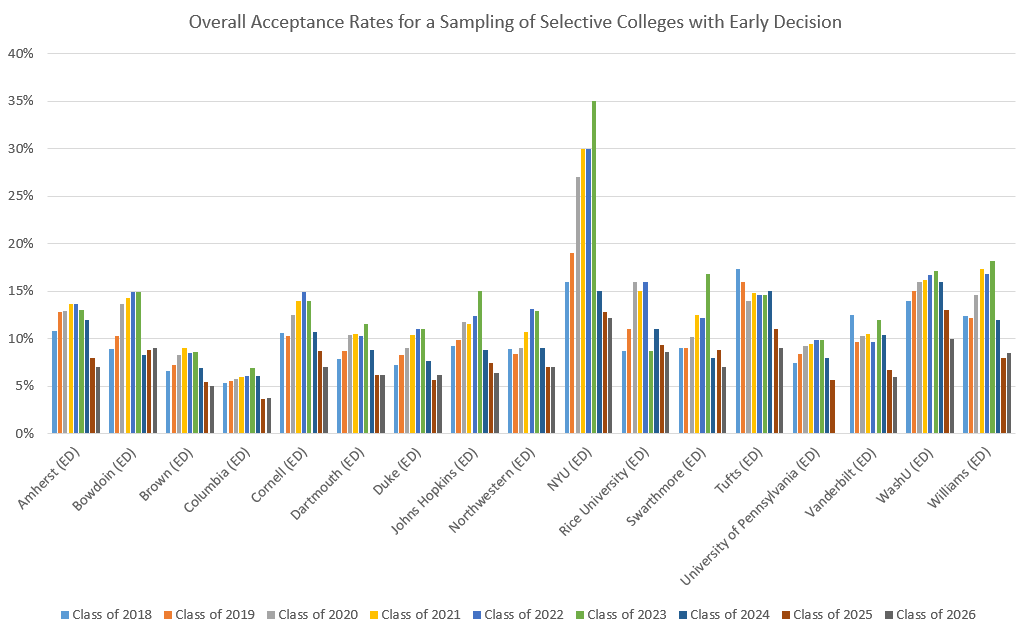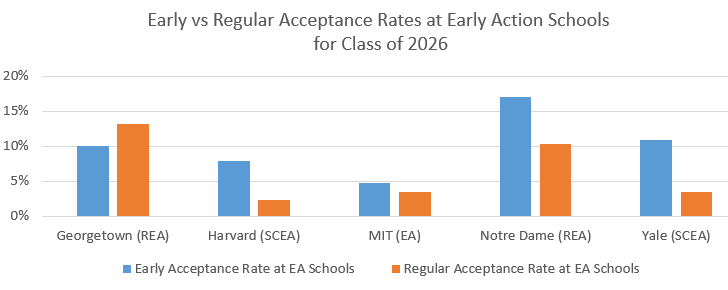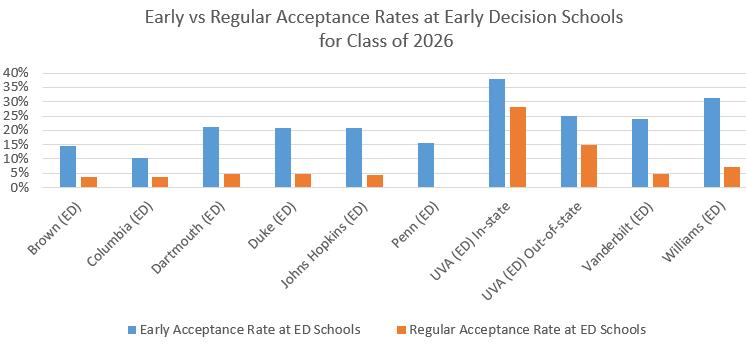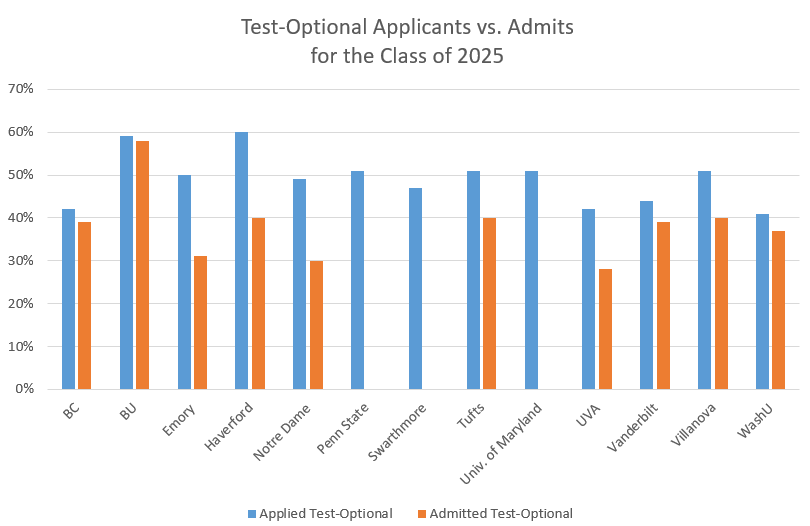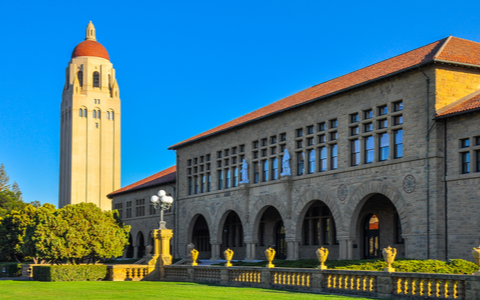 This year’s college admissions cycle continues to surprise following a uniquely unpredictable admissions cycle last year. Early applications surged at selective schools and resulted in decreasing acceptance rates. Regular admissions saw huge increases in applications for selective private and state schools as well, and the use of waitlists continues to be difficult to forecast.
This year’s college admissions cycle continues to surprise following a uniquely unpredictable admissions cycle last year. Early applications surged at selective schools and resulted in decreasing acceptance rates. Regular admissions saw huge increases in applications for selective private and state schools as well, and the use of waitlists continues to be difficult to forecast.
Several factors created a perfect storm of applications. Many colleges extended their test-optional policies after the success of last year. This continues to give many students unrealistic hopes of being accepted to their dream school and has led to an increase in applications to reach schools. Finally, the uncertainty of college admissions continues to prompt students to create longer college lists, applying to more and more schools.
As a follow-up to our previous blog post on Early Admissions Trends for the Class of 2026, here’s an in-depth review of this year’s regular decision and overall admissions trends. To assist applicants who will be applying this fall, our analysis will conclude with a helpful list of tips for crafting your “best-fit” college list and maximizing your admissions chances.
Rising Applicant Numbers, Lower Acceptance Rates
The trend of selectivity continues, as regular decision and overall acceptance rates at many selective schools continues to decrease. Highly sought-after private and public universities received a staggering number of applications and, since many of these schools fill a large portion of their freshman class through early admissions, regular admissions were all the more competitive. Last year, Jenny Rickard, President & CEO of the Common App, reported that there was a 9% increase in the application per applicant ratio. For the Class of 2026, as of November 16, 2021, the Common App reported a 13% increase in the number of college applicants and a 22% jump in the total applications submitted. In short, while there were more applicants this year, these applicants also applied to more schools than ever before.
Many selective schools with relatively new test-optional policies continued to receive a record-breaking number of applications for the Class of 2026. Compared to two years ago, Colgate experienced an unprecedented 146% jump in applications. This year, MIT received 33,796 apps; pre-pandemic they typically received an average of 20,000. Applications to MIT have increased by 68% over the past two years. Boston University, Brown, the University of California system, Duke, Florida State University, Harvard, Middlebury, and Yale (just to name a few) had their largest applicant pools in school history for the Class of 2026.
Schools that were already staggeringly selective became even more so, with overall acceptance rates at or under 5%, this list includes Brown (5%), Columbia (3.73%), Harvard (3.19%), MIT (3.96%), and Yale (4.46%).
Notably, some schools broke records not only with their lowest acceptance rate, but also with their largest acceptance rate drop in one year. Overall acceptance rates for schools that dropped over 4 percentage points include Boston University (rate dropped from 18.3% last year to 14% for the Class of 2026), Wesleyan (rate decreased 5.5 points to 13.9%), and Emory (rate dropped from 20.4% last year to 15.8%). Shockingly, Northeastern’s overall acceptance rate dropped to 6.7% this year, as compared to 18% for the Class of 2025. Northeastern’s selectivity for the Class of 2026 is now comparable to Northwestern (7%) and Johns Hopkins (6.4%).
Several highly selective schools have recently decided not to share their admissions data until the cycle for that year is complete (early August), including Cornell, Penn, Princeton, Stanford, and UChicago.
Princeton explained this shift in policy, stating:
We know this information raises the anxiety level of prospective students and their families and, unfortunately, may discourage some prospective students from applying. For this reason, we have in recent years stopped reporting the annual admission rate, as well as the admission rate by SAT score range and average GPA. We have now made the decision not to release admission data during the early action, regular decision and transfer admission cycles.
The charts below show a trend among many selective schools of a slight increase in acceptance rates for the Classes of 2022 and 2023 followed by a dip in acceptance rates for the Classes of 2024 through 2026, years influenced by the pandemic. This pattern was even more pronounced for colleges with Early Decision plans than colleges with Early Action plans.
As a reminder, early decision is binding as universities are guaranteed applicants’ attendance, as compared with early action, which is non-binding and gives students until May 1st to decide. As a result, colleges with early decision programs tend to admit a higher percentage of early applicants, who have demonstrated such strong interest, and their binding commitment helps increase admissions yield for the incoming class.
Over-enrollment for the Class of 2025
Many schools over-enrolled the Class of 2025 and, as a result, have admitted fewer applicants to the Class of 2026. USC plans to offer Fall 2022 admission to about 8,200 students—7% less than last year—due to over-enrollment the past two years. J.T. Duck, Tufts Dean of Admissions for the School of Arts and Sciences and the School of Engineering said, “Given last year’s strong positive response to our offers of admission, we have made slightly fewer offers this year and hope to be able to admit some outstanding students from our wait list in May.” Northeastern’s target enrollment for the Class of 2026 is 2,500, which is 1,000 lower than typical. Northeastern is struggling with over-enrollment and overcrowding from last year’s admissions cycle.
Selective private and public universities are dealing with over-enrollment that is breaking school records. This fall, at the University of Michigan, the total student body was more than 50,000 for the first time in school history and the Class of 2025 enrollment increased by more than 400 students. The University of Wisconsin-Madison enrolled the largest class in school history, 8,465 incoming freshmen, up 16% over the previous year. At the University of Pittsburgh, the Class of 2025 broke school enrollment records and the Class of 2024 was over-enrolled as well.
Kellie Kane, Pitt’s Director of Admissions, stated:
“The University of Pittsburgh welcomed a larger-than-expected fall 2021 first-year class of 4,927 students to the Pittsburgh campus — a record number as a result of higher-than-projected yield of students from Pennsylvania more than likely due to the uncertainty of the pandemic.”
Larger Percentages of Freshman Classes Filled with Early Applicants
Some schools continue to admit large portions of the freshman class through early admissions, making the regular admissions cycle even more competitive. More students tend to apply through regular decision, so they are competing for fewer remaining positions in the class.
Barnard, Boston University, Dartmouth, Duke, Northwestern, Skidmore, Tulane, the University of Pennsylvania, Washington University in St. Louis, and Williams admit 40% or more of their incoming class through their early decision program. The chart below shows the percentages of recent classes for a sampling of selective colleges filled with early decision admits.
Early decision tends to have a higher acceptance rate than early action and regular decision; and schools that offer early decision have a larger variance between early and regular acceptance rates than schools with early action programs. See the charts below.
Increasing Diversity
Increasing the diversity of incoming classes has become a top priority for the admissions departments at many schools. This includes international applicants, students from varying socioeconomic and ethnic backgrounds, and first-generation college students. Schools are seeking top-quality students from diverse backgrounds through a variety of programs, including American Talent Initiative, QuestBridge, the KIPP Foundation, and A Better Chance.
According to The New York Times, “The aftermath of the George Floyd protests and a decreased reliance on standardized tests have led to more diverse admissions at elite universities.” Cornell states their expanded virtual outreach has drawn more diverse applicants and of their admitted students, 57.7% self-identify as students of color. Barnard, Boston College, Columbia, Penn, Pomona, Tufts, and USC are all welcoming their most diverse classes, despite decreasing acceptance rates.
Applications from international students continue to increase and many U.S. schools are encouraging it. Last fall, Brown announced that over the next four years they plan to extend need-blind admissions policy to international students, which could continue to greatly increase international applications. In January, Dartmouth expanded its need-blind admissions program to include all applicants, regardless of citizenship.
This chart demonstrates the makeup of admitted classes at several selective universities.
Test-Optional Policies
Many colleges credit new test-optional policies with increasing the diversity of their applicant pool.
While there is more information for the Class of 2026 regarding test-optional admits, on the flip side, there are fewer statistics released by schools about test-optional applicants overall. For perspective, see the chart below which shows the gap between test-optional applicants versus test-optional admits for the Class of 2025 at several selective schools.
This year, Georgetown was one of the few selective schools that required the SAT or ACT for all applicants, unless the student experienced pandemic-related circumstances, such as a last minute testing administration cancellation. MIT announced for the 2022-23 admissions cycle, they will once again require ACT and SAT scores. It is to be seen if this reduces their number of applications closer to pre-pandemic numbers.
Interestingly, most colleges that became test-optional on a trial basis in response to Covid-19 have now committed to continuing their test-optional policies for the next one to two years. The University of California system will no longer use the ACT and SAT, and last year UC-Berkeley adopted a “test-blind” policy, which means no test scores were considered for any applicant.
Demonstrated Interest Matters
As schools receive more and more applications, it has become increasingly difficult to predict yield (the number of admitted students who will attend).
Demonstrated interest refers to the ways in which a student shows how engaged they are in the school and the extent to which they are committed to attending if admitted. Most often, interest is assessed through college visits and contact with the college. Inside Higher Ed points out that this is particularly important for students with high SAT scores. Colleges do not want to be considered a “safety school,” and may avoid high-scoring applicants who demonstrate little interest beyond applying.
According to Common Data Sets released by each college, the majority of schools say that demonstrated interest is “considered,” but not important or very important. The “considered” category likely has a wide range of meanings from school to school. American University is one of the only schools that rates demonstrated interest as “Very Important”, and Lehigh rates it as “Important”.
For tips on how to demonstrate interest to your top school choices, see our blog post.
Delaying Admission
Many schools offered delayed admission to incoming freshmen, providing spring acceptances or asking the students to begin the following fall.
Tulane offers a Spring Scholars program, in which students participate in study abroad, internships, or other academic activities in the fall and matriculate in the spring semester. Cornell admits 50 students to the First-Year Spring Admission (FYSA) program, which was established in 2015 to increase access to a Cornell education. Hamilton aims to enroll about 45 first-year students in their spring admission program each year. This allows them to offer admission to additional strong applicants, while also filling spots created by current students who are studying abroad during the spring semester. USC aims to enroll about 600 freshman spring admits each year. The Brandeis Midyear Program offers 100 freshmen students enrollment each year.
Tips for Future Applicants
Think carefully about your college list. When crafting your college list, reflect on your goals, interests, and values. Make sure that you would be happy to attend every school on your list. Do not apply to a university that is not a good fit or about which you have reservations. Be very realistic about your chances and have grounded expectations. Your college list should have a healthy distribution of reach, target, and safe schools. Apply to 10-12 colleges so that you have enough time to prepare high-quality applications, and still manage the process alongside your academic responsibilities senior year.
Demonstrate interest. If possible, visit all of the schools in which you are interested. When you visit, register with the admissions reception desk. Many schools track visits, and see this as the strongest possible way to demonstrate interest. If you are applying for early admission, visit the college by November 15. If you are applying for regular admission, visit by February 15 at the latest.
Know your colleges. Many colleges go a step further, and emphasize “informed” interest. It’s not enough to visit the college; you need to observe the features of each college that differentiate it from other schools, and that align with your own interests and goals. Be prepared to inform colleges in your essays and interviews of specific reasons why you wish to attend.
Be strategic with early admissions. While early acceptance rates tend to be higher than regular acceptance rates, early admissions have become harder to predict. Think carefully and strategically about your early admissions choice.
Highlight your heritage. For many universities increasing the diversity of incoming classes has become a top admissions priority. If you identify with an under-represented minority, participate in diversity days hosted by the college, if appropriate.
Engage in school. In order to maximize your options in the college admissions process, try to reach your potential throughout high school. Engage in your academics: do your homework, participate in classes, choose interesting projects, speak with your teachers if you have questions, and manage your time well. Identify your interests, and choose extracurricular activities that are meaningful to you; participate with commitment and continuity; and seek leadership roles in the activities you enjoy the most. Engaging in your coursework and activities in high school will also position you well for making the most of your college years.
The college admissions process can be overwhelming, and it may feel difficult to know where to start. At Collegiate Gateway, we are eager to share our expertise and guide you on the path to your “best fit” college. Please feel free to contact us! As always, we’re happy to help!
Check out our events page for future college admissions presentations.



